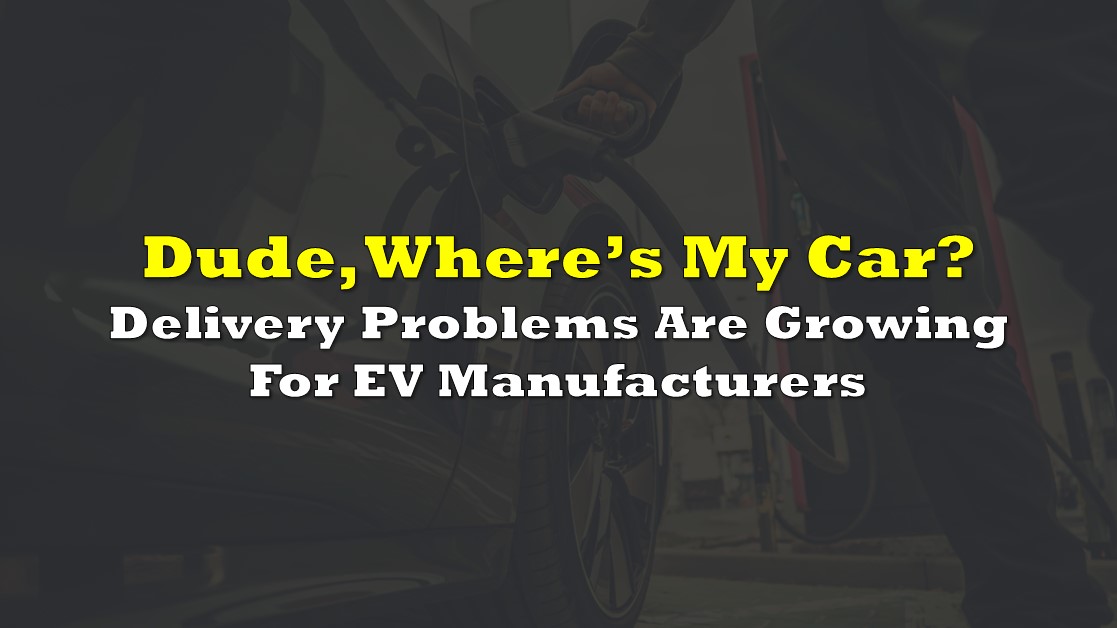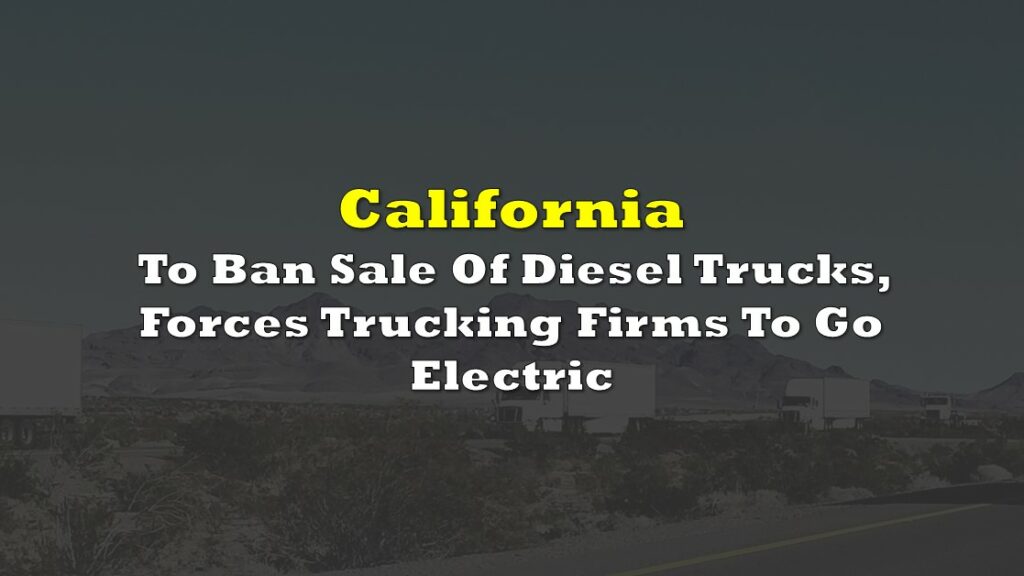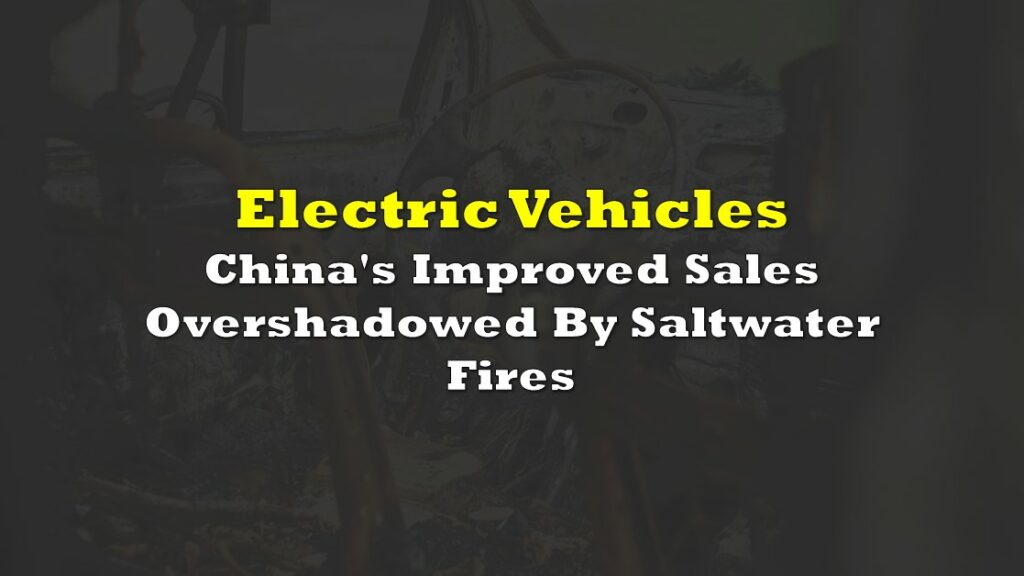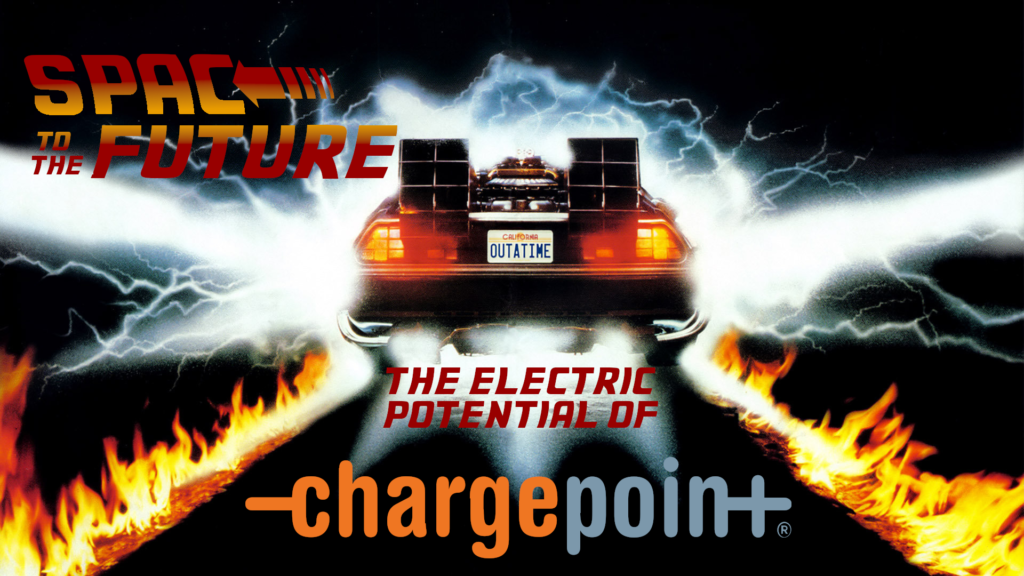Electric vehicle (EV) manufacturers are facing several daunting obstacles. Most prominently, demand for the high-priced cars seems to be waning, so much so that Tesla, Inc. (NASDAQ: TSLA) felt compelled earlier this month to slash the prices of its most popular models by up to 20% in the U.S. and Europe. In addition, some supply chain issues continue to exist, but the scope of that problem seems to be diminishing.
A third major challenge, particularly for start-up EV makers is delivery logistics. The concern here is very basic: customers are not receiving the vehicles they have purchased on as timely a basis as they should. The risk is that future potential customers may consider such delays unacceptable and decide to look elsewhere for their car needs, much as they would for other products and brands where delivery is not as convenient and seamless as they would like.
Unfortunately, and unlike supply chain challenges, delivery issues seem to be getting more problematic. Worse, no easy solutions appear to be available.
The table below shows unit delivery and production statistics by quarter in 2022 for Tesla and the two major EV start-ups in the U.S., Lucid Group, Inc. (NASDAQ: LCID) and Rivian Automotive, Inc. (NASDAQ: RIVN).
Production and Delivery Data on Selected EV Manufacturers
| Full-Year 2022 | 4Q 2022 | 3Q 2022 | 2Q 2022 | 1Q 2022 | |
| Tesla | |||||
| Vehicles Delivered to Customers | 1,313,851 | 405,278 | 343,830 | 254,695 | 310,048 |
| Vehicles Produced | 1,369,611 | 439,701 | 365,923 | 258,580 | 305,407 |
| Delivery Shortfall | (55,760) | (34,423) | (22,093) | (3,885) | 4,641 |
| Ratio of Deliveries to Production | 96% | 92% | 94% | 98% | 102% |
| Lucid | |||||
| Vehicles Delivered to Customers (A) | 4,369 | 1,932 | 1,398 | 1,039 | |
| Vehicles Produced (A) | 7,180 | 3,493 | 2,282 | 1,405 | |
| Delivery Shortfall (A) | (2,811) | (1,561) | (884) | (366) | |
| Ratio of Deliveries to Production | 61% | 55% | 61% | 74% | |
| Rivian | |||||
| Vehicles Delivered to Customers | 20,332 | 8,054 | 6,584 | 4,467 | 1,227 |
| Vehicles Produced | 24,337 | 10,020 | 7,363 | 4,401 | 2,553 |
| Delivery Shortfall | (4,005) | (1,966) | (779) | 66 | (1,326) |
| Ratio of Deliveries to Production | 84% | 80% | 89% | 101% | 48% |
In terms of both units and as a percentage of production, Tesla is delivering fewer cars than it produces in each quarter to the customers which bought the vehicles. Its ratio of quarterly deliveries to production, 92% in 4Q 2022, is still reasonably high, but that ratio has slipped noticeably since 2Q 2022 (98%). More concerning is the quarterly gap in units between Tesla deliveries and production is increasing markedly, about 34,000 in 4Q 2022 versus 4,000 in 2Q 2022.
Two chief reasons seem to be causing and amplifying the delivery shortfalls:
- 1) the presence of more EV manufacturers using the direct-to-consumer business model as opposed to the traditional franchise-dealership model; and
- 2) a sharp reduction in the number of vehicle haulage truck drivers.
The first issue shows no signs of changing, and the second will take quite some time (and much higher payments to prospective drivers) to solve. Indeed, last summer, the CEO of United Road Services, one of the biggest vehicle haulers in the U.S., estimated that 30% of vehicle haulage drivers had left the business since the onset of COVID due to the physically and mentally draining aspects of the job and the shrinking premium pay that used to exist between car hauling and general freight truck drivers.
For start-up EV makers, the amend phrase, “When giant Tesla gets the sniffles, other EV makers catch a cold” seems to apply. In 4Q 2022, Rivian only delivered 80% of the cars it produced; Lucid was even worse, delivering just 55% of its manufactured EVs.
If one discards the worst-case and unlikely explanation for these enormous shortfalls — that the companies are producing many vehicles they have not yet sold — an investor must conclude that delivery logistics problems are worsening for Rivian and Lucid. In order to grow and maintain a satisfied customer base, this key issue must be resolved.
Information for this briefing was found via Edgar and the sources mentioned. The author has no securities or affiliations related to this organization. Not a recommendation to buy or sell. Always do additional research and consult a professional before purchasing a security. The author holds no licenses.









